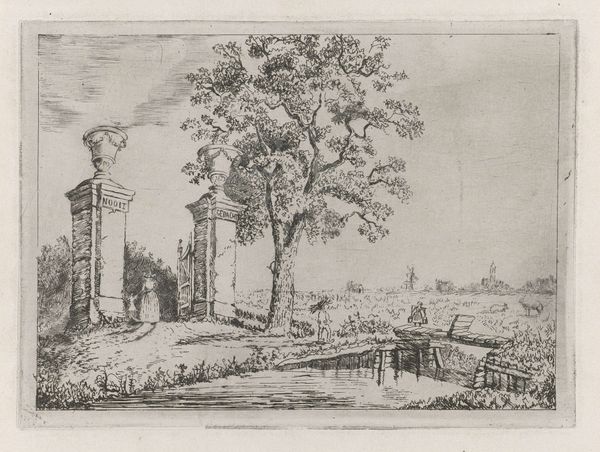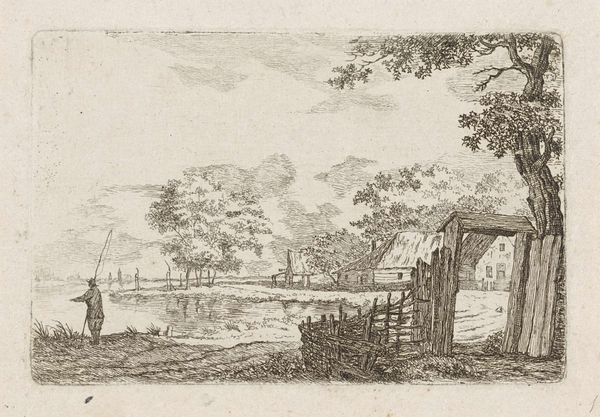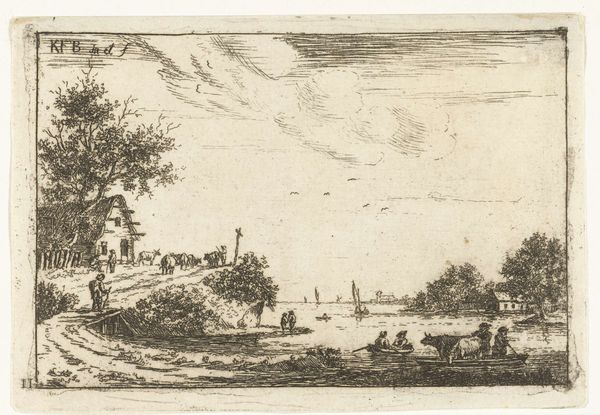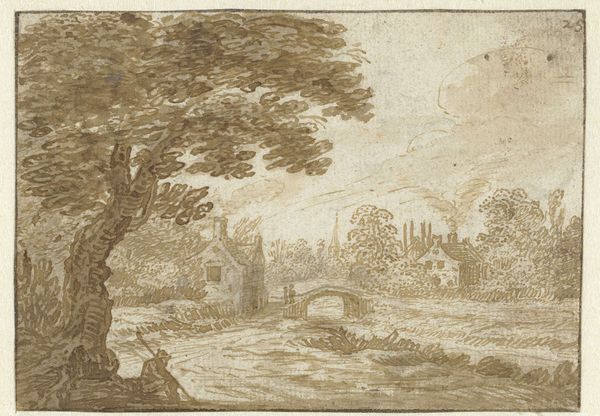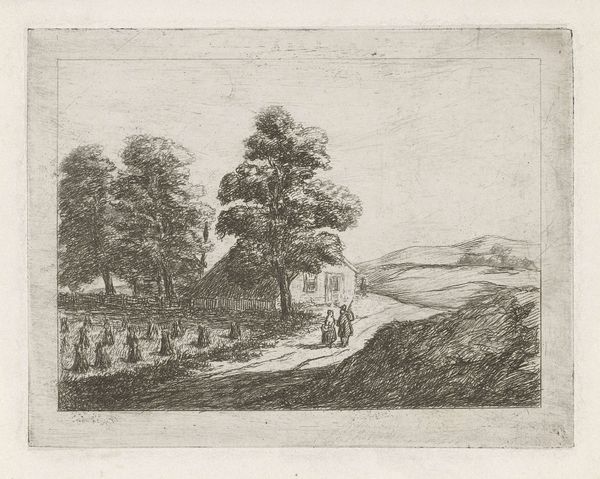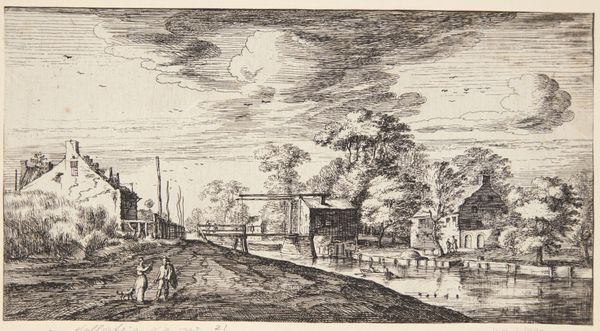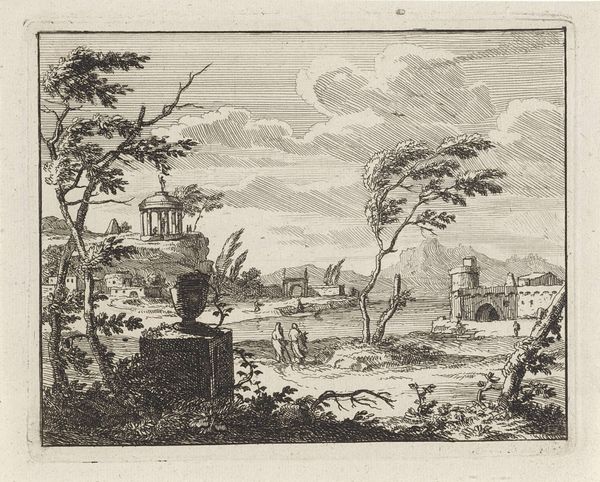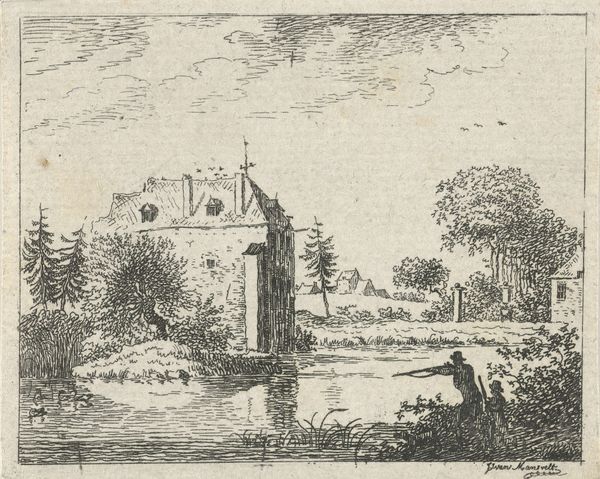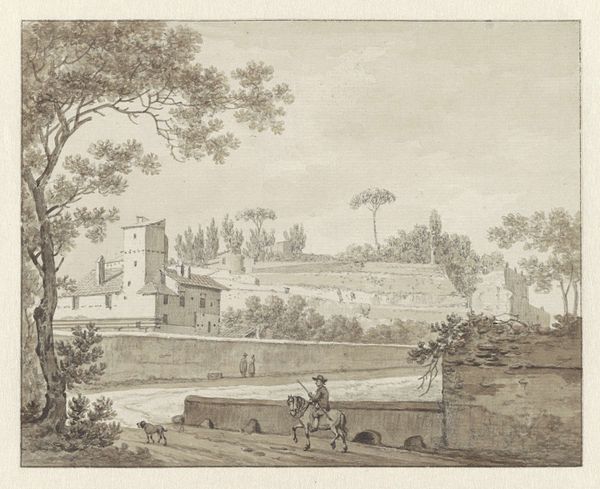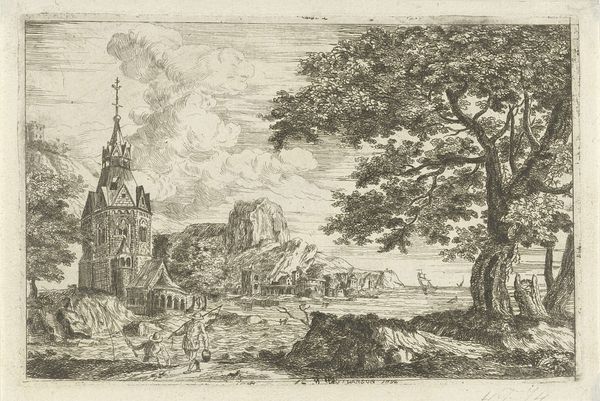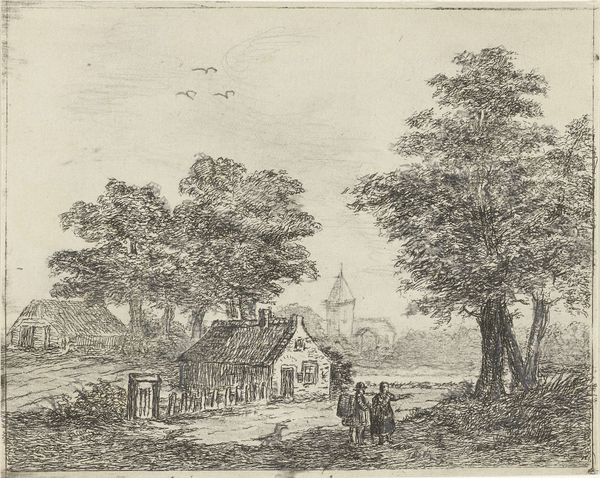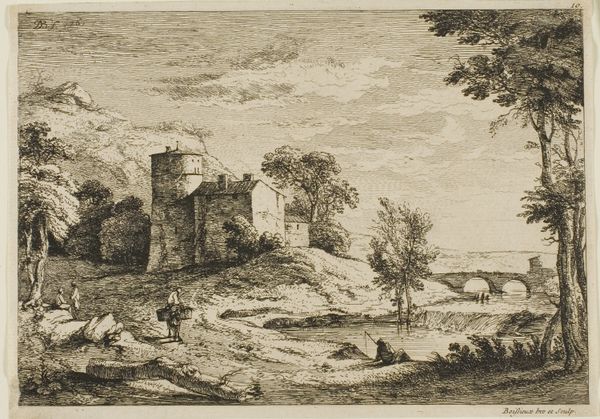
print, etching
# print
#
pen sketch
#
etching
#
landscape
#
genre-painting
#
realism
Dimensions: height 99 mm, width 136 mm
Copyright: Rijks Museum: Open Domain
Eberhard Cornelis Rahms created this etching of the entrance to 'Nooit Gedacht' sometime in the 19th century. It's a study in contrasts, where formal, almost rigid architectural lines meet the organic and softer forms of nature. Rahms sets up a visual dichotomy between the constructed and the natural. The gate pillars, adorned with urns, frame a view into a landscape that blurs into the distance with looser, less defined strokes. This contrast is reinforced by the controlled lines of the architecture against the free-flowing lines of the foliage and the softly rendered figures. Consider the semiotic implications of the gate itself. It is a threshold, a boundary between spaces, suggesting a transition from order to nature, or perhaps from the known to the unknown. The play of light and shadow across the scene adds another layer, obscuring certain details while highlighting others, drawing our eye through the composition and deeper into the landscape. This etching doesn't just depict a place, but also invites us to reflect on the very act of seeing and interpreting the world around us.
Comments
No comments
Be the first to comment and join the conversation on the ultimate creative platform.
